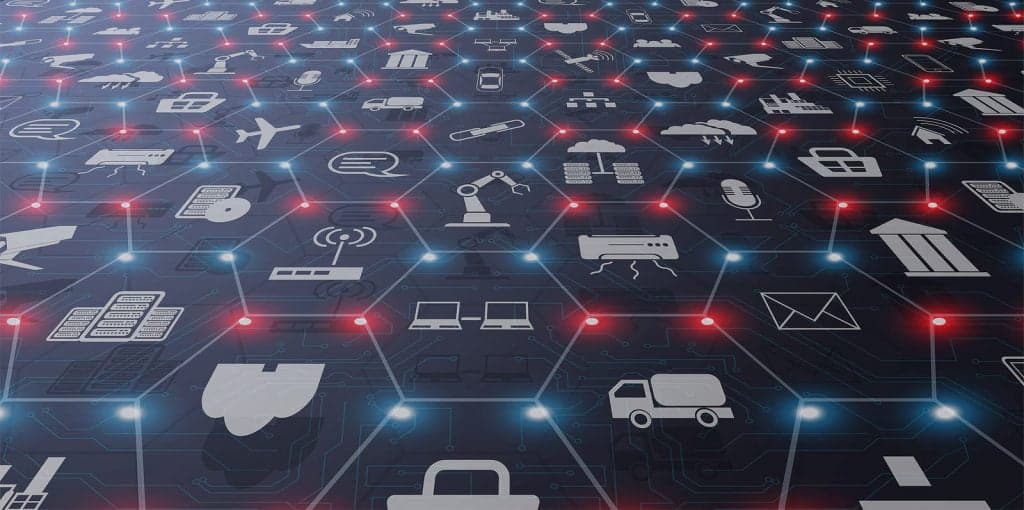The Industrial Internet of Things (IIoT) or Industrial Internet consists of a vast ecosystem of industrial devices connected by communications technologies that power systems that can monitor, collect, exchange, analyze, and deliver valuable new insights to industrial enterprises. Industrial IoT devices and systems include such things as connected electric meters, wastewater systems, flow gauges, pipeline monitors, and production line robots. It is also known as Industry 4.0, or the Fourth Industrial Revolution.
Industrial IoT technology is enabling predictive analytics, provides real-time production data, and accelerates product development by feeding operations and service data back into the product design cycle.
The Roots of Industrial IoT
General Electric (GE) coined the term “Industrial Internet” in late 2012. It was one of the companies that established the Industrial Internet Consortium to accelerate the development, adoption, and widespread use of interconnected machines and devices, intelligent analytics, and connected communications for people at work.
While IoT products and services at the consumer level often put their emphasis on convenience and quality of life, in industry Internet of Things applications tend to be more mission-critical. So IoT industrial technology typically connects machines and devices in industries such as oil and gas, power generation, and health care, where system failures or unplanned downtime can result in life-threatening or high-risk situations.
The Industrial IoT uses smart sensors, actuators, and data analytics to enhance manufacturing and industrial processes. Connected sensors and actuators enable industrial organizations to identify inefficiencies and problems early, therefore saving time and money, as well as supporting business intelligence (BI) efforts. In the manufacturing sector, particularly, Industrial IoT offers benefits relating to quality control, sustainable and green practices, supply chain governance, and overall supply chain efficiency.
Industrial IoT Core Components
Broadly, any industrial IoT ecosystem includes:
- Intelligent assets capable of sensing, communicating and storing information about themselves.
- Public and / or private data communications infrastructure.
- Analytics systems and applications capable of generating business information from raw data.
- Human operators and administrators.
Facilitating IIoT Deployments
At the institutional level, the Industrial Internet Consortium (IIC) concerns itself with the promotion of IIoT deployment, from the perspective of using data to improve operations, enhance services, and detect new opportunities. Part of its work in doing this involves creating standards for connecting objects, sensors, and large computing systems. It also collaborates with other industry bodies, such as the Industry 4.0 Platform and the Industrial Internet of Things Consortium.
One example of this work is the Industrial Internet Reference Architecture, or IIRA, whose current version 1.8 (published in January 2017) gives guidelines for IIoT projects and the design of IIoT solution architectures that deploy interoperable Industrial Internet of Things systems.
IIoT Use Cases
The range of use cases and business contexts involving the Industrial IoT is quite broad and includes the following:
- Smart factory applications and smart warehousing.
- Predictive, preventative, and remote maintenance.
- Freight, goods, and transportation monitoring.
- Connected logistics.
- Smart metering and smart grids.
- Smart environment solutions.
- Smart city applications.
- Smart farming and livestock monitoring.
- Industrial security systems.
- Energy use optimization.
- Industrial heating, ventilation, and air conditioning.
- Monitoring of manufacturing equipment.
- Asset tracking and smart logistics.
- Atmosphere and temperature monitoring in industrial environments.
- Safety and health monitoring for industrial workers.
Top IoT Industries
Industrial Internet of Things applications and methodology are driving major investments and technology adoption in the following industries:
Manufacturing
Manufacturers deploy IoT technologies to optimize their processes, monitor equipment, and enable preventative and predictive maintenance on that equipment. Inward facing investments in these areas are principally concerned with optimizing systems and saving costs.
At the level of outward-facing investments (those that make improvements in customer experience or product usage), manufacturers are creating and maintaining networked links between products to establish how consumers are using them, and sampling usage data and sensor measurements to assist in product improvement. The identification of broad patterns in terms of how a product is used can also inform the next generation of the product or help in the early diagnosis of potential problems.
Transportation
Freight monitoring drives much of the IoT spending in this sector. Freight and public transportation companies are increasingly equipping their vehicles with sensors that help schedule maintenance, optimize fuel consumption, and train their drivers.
Some vehicles have digital data recorders that are programmed to take video samples under conditions of heavy acceleration (potentially indicative of a serious traffic accident). Connected vehicles can also monitor operating or driving behavior for insurance purposes.
Utilities
Smart Grid meters are now routinely deployed in the US and in several European countries. Electricity meters have their own source of power, which doesn’t need to rely on batteries, and generally occupy fixed positions, making them ideal for automated reading. IoT devices are also used within power generating plants to monitor equipment, facilitate predictive maintenance, and provide additional safety monitoring.
In the oil and gas industry, smart sensors and monitors of the IIoT help organizations to minimize losses due to leakage and breakdowns by keeping a close eye on pipes, valves, and pressure gauges.
Health Care
Large scale deployment of industrial-type IoT technologies in the health care sector has earned this industry its own subset of the IoT — the Internet of Medical Things, or IoMT.
The use of IoT technology in the health care field is extensive, ranging from connected imaging, monitoring, and troubleshooting devices for patient care, to real-time location systems that can help hospital administrators and caregivers in tracking equipment, dispensing medicine, and maintaining contact with staff and patients. Connected implants, prosthetics, and wearables also harness the power of the IoT, streaming data back to health care providers.
For the health sector, all of these technological benefits come at the price of increased vigilance, when it comes to cybersecurity (for protection of both devices and software systems), and in data governance, and the safeguarding of sensitive health information.
Consumer Electronics and Vehicles
Home and office automation systems, smart accessories, and digital assistants such as Amazon Alexa and Google Home are the market leaders. The increasing integration of these systems with connected cars has also contributed to making the smart vehicle sector an IoT industry leader in the consumer space.
Summary:
Industrial IoT
The Industrial Internet of Things (IIoT) or Industrial Internet consists of a vast ecosystem of industrial devices connected by communications technologies that power systems that can monitor, collect, exchange, analyze, and deliver valuable new insights to industrial enterprises. Industrial IoT devices and systems include such things as connected electric meters, wastewater systems, flow gauges, pipeline monitors, and production line robots. It is also known as Industry 4.0, or the Fourth Industrial Revolution.

